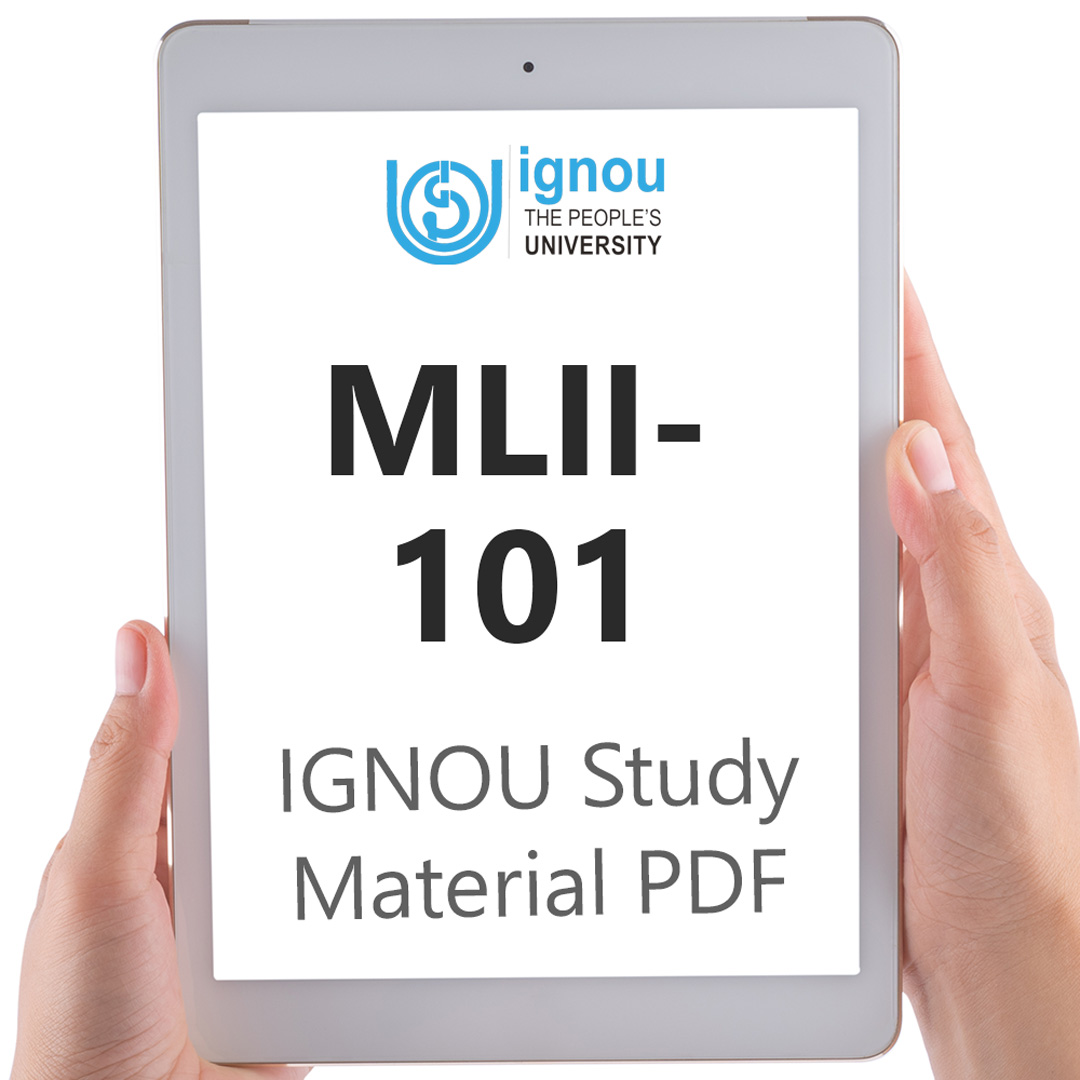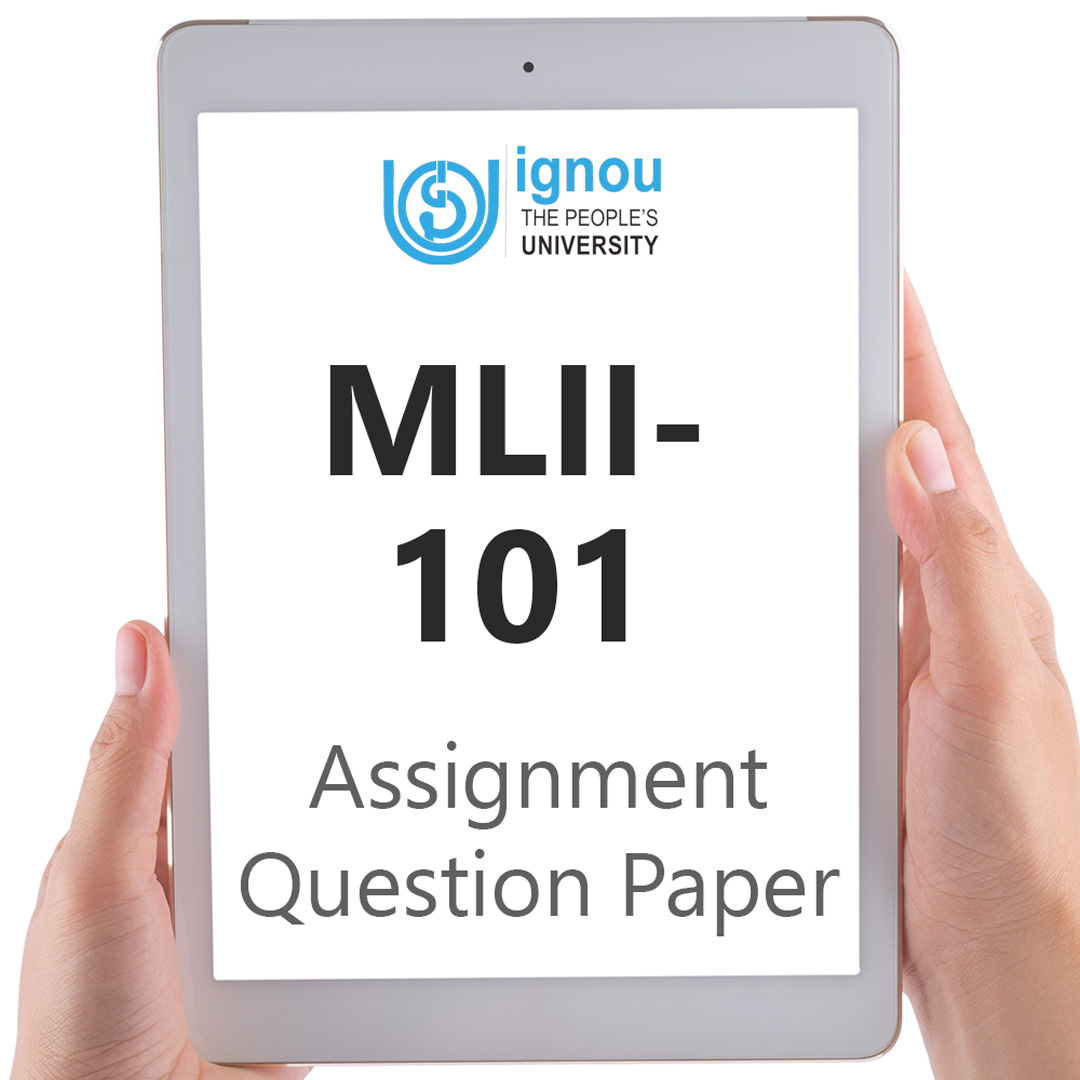If you are looking for MLII-101 IGNOU Solved Assignment solution for the subject Information Sources, Systems and Services, you have come to the right place. MLII-101 solution on this page applies to 2023-24 session students studying in MLIS courses of IGNOU.
MLII-101 Solved Assignment Solution by Gyaniversity
Assignment Code: MLII-101/AST/TMT/ Jul. 2023/Jan.2024
Course Code: MLII-101
Assignment Name: Information Sources, Systems and Services
Year: 2023-2024
Verification Status: Verified by Professor
Q1) Discuss the role of NISCAIR (Now NIScPR) in providing information services to users.
Ans) NISCAIR, which is now known as NIScPR (National Institute of Science Communication and Policy Research), plays a pivotal role in providing information services to users, particularly in the field of science and technology.
Here is an overview of the role of NIScPR in delivering information services.
a) Publication of Journals and Magazines:
1) NIScPR is renowned for publishing a variety of scientific journals and magazines. These publications cover diverse scientific disciplines, disseminating research findings, reviews, and articles authored by experts in the respective fields.
2) Journals like the "Indian Journal of Traditional Knowledge," "Journal of Scientific and Industrial Research," and "Science Reporter" are some examples of publications managed by NIScPR.
b) Research and Information Dissemination:
1) NIScPR engages in extensive research activities and serves as a hub for the collection, analysis, and dissemination of scientific information. It plays a crucial role in bridging the gap between scientific research and the wider public.
2) The institute provides a platform for scientists, researchers, and scholars to share their work, contributing to the advancement of scientific knowledge.
c) Science Communication and Outreach:
1) NIScPR focuses on science communication and outreach programs to make scientific information accessible to diverse audiences, including students, educators, policymakers, and the general public.
2) Initiatives such as science exhibitions, workshops, and educational programs are organized to promote scientific awareness and literacy.
d) Information Services and Documentation:
1) NIScPR serves as a repository of scientific literature and information. The institute maintains extensive databases, libraries, and documentation centers that house a wealth of scientific resources.
2) Information services offered by NIScPR include access to research papers, articles, and reference materials, supporting the research community and facilitating knowledge dissemination.
e) Technology Transfer and Policy Research:
1) NIScPR engages in technology transfer activities, facilitating the application of scientific research in practical domains. The institute collaborates with industries and policymakers to contribute to the formulation of science and technology policies.
2) Policy research conducted by NIScPR addresses contemporary issues and challenges in the scientific landscape, offering insights to guide policymakers and stakeholders.
f) Digital Initiatives: Embracing digital advancements, NIScPR has adopted online platforms and digital repositories to enhance the accessibility of scientific information. The institute provides online access to its publications, databases, and research outputs.
Q2) Differentiate between reviews, state-of-the-art reports, and trend reports. Explain Its benefits as information consolidation products.
Ans)Comparison between reviews, state-of-the-art reports, and trend reports are:
Benefits of Information Consolidation Products
a) Comprehensive Understanding: Reviews, state-of-the-art reports, and trend reports contribute to a comprehensive understanding of a subject by consolidating relevant information from diverse sources.
b) Efficient Information Access: These products provide a one-stop resource for researchers, professionals, and decision-makers, allowing them to access a wealth of information without navigating multiple sources.
c) Identifying Research Gaps: Reviews help identify gaps in existing knowledge, guiding researchers toward areas where further investigation is needed.
d) Strategic Planning: State-of-the-art reports offer insights into the current landscape, enabling strategic planning based on a clear understanding of recent advancements and technologies.
e) Anticipating Future Trends: Trend reports are invaluable for anticipating future trends and developments, helping stakeholders make informed decisions and stay ahead of changes in their respective fields.
f) Decision Support: These consolidation products serve as decision support tools, aiding professionals, and policymakers in making well-informed choices based on a comprehensive understanding of the subject matter.
Q3) Discuss the various components of planning for designing an information system.
Ans) The planning process for designing an information system typically includes several key components:
a) Needs Assessment:
1) Identify the business requirements and objectives that the information system is expected to address.
2) Conduct a thorough analysis of the current state of the organization's information systems and technology infrastructure.
3) Gather input from key stakeholders, including end-users, managers, and IT professionals, to understand their needs and expectations.
b) System Objectives and Scope:
1) Define the specific objectives that the information system should achieve, aligning them with the overall goals of the organization.
2) Clearly outline the scope of the information system, specifying the functionalities and features it will include.
c) System Architecture:
1) Define the overall architecture of the information system, considering factors such as hardware, software, networking, and data management.
2) Choose an appropriate architecture model, such as client-server, cloud-based, or hybrid, based on the organization's requirements.
d) Data Management:
1) Identify the types of data that the system will handle and establish data management policies.
2) Define data storage, retrieval, and update mechanisms, including database design and data security measures.
e) User Interface Design:
1) Design a user-friendly interface that facilitates easy interaction with the information system.
2) Consider user experience (UX) principles to ensure that the interface is intuitive, efficient, and meets the needs of diverse users.
f) System Integration:
1) Plan for the integration of the new information system with existing systems and applications.
2) Consider interoperability and compatibility to ensure seamless communication between different components of the IT infrastructure.
g) Security Measures:
1) Develop a comprehensive security plan to safeguard the information system and its data.
2) Implement access controls, encryption, authentication, and other security measures to protect against unauthorized access and data breaches.
h) Testing and Quality Assurance:
1) Plan for testing procedures to ensure that the information system functions as intended.
2) Include unit testing, integration testing, and user acceptance testing to identify and resolve issues before deployment.
i) Implementation Plan:
1) Develop a phased implementation plan that outlines the steps for deploying the information system.
2) Consider training programs for end-users and IT staff to ensure a smooth transition.
j) Monitoring and Maintenance:
1) Establish procedures for monitoring the performance of the information system after implementation.
2) Plan for ongoing maintenance, updates, and enhancements to address changing business needs and technological advancements.
k) Documentation:
1) Create comprehensive documentation for the information system, including user manuals, technical specifications, and maintenance procedures.
l) Budget and Resources:
1) Develop a budget for the entire design and implementation process, considering costs associated with hardware, software, training, and ongoing maintenance.
2) Allocate resources, including personnel and technology assets, to support the successful development and deployment of the information system.
Q4) What do you understand by a technical enquiry? How it differs from general inquiry?
Ans) A technical inquiry refers to a specific type of investigation or examination that is focused on obtaining detailed and specialized information related to a technical or scientific subject. This type of inquiry is typically conducted to gather precise details, specifications, or technical data about a particular topic, product, process, or system. Technical inquiries are common in fields such as engineering, technology, science, and other specialized domains where in-depth knowledge and accuracy are essential. Here are some key characteristics that differentiate a technical inquiry from a general inquiry:
a) Focus on Technical Details: Technical inquiries are specifically geared towards obtaining detailed technical information. This could include specifications, performance metrics, design details, or any other aspect that requires a deep understanding of the subject matter.
b) Specialized Expertise: Conducting a technical inquiry often requires a certain level of expertise in the relevant field. Individuals involved in technical inquiries are expected to have a technical background or specialized knowledge to comprehend and analyse the information accurately.
c) Precision and Accuracy: Technical inquiries demand a high level of precision and accuracy. The information sought is often quantitative and must be presented with a high degree of certainty. This is crucial, especially when dealing with engineering specifications, scientific measurements, or technical standards.
d) Specific Problem Solving: Technical inquiries are frequently conducted to solve specific technical problems or challenges. The inquiry process involves identifying the root causes of technical issues, exploring potential solutions, and making informed decisions based on technical data.
e) Technical Documentation: Results from technical inquiries are often documented in a technical format. This may include detailed reports, technical specifications, engineering drawings, or other forms of documentation that provide a comprehensive understanding of the subject.
f) Niche Audience: The audience for technical inquiries is usually a niche group of individuals who possess the technical knowledge required to interpret and use the information effectively. This could include engineers, scientists, technicians, or other professionals with expertise in the relevant field.
g) Specific Tools and Methods: Technical inquiries may involve the use of specialized tools, methods, or instruments to gather and analyse data. These tools are chosen based on the technical nature of the inquiry and the type of information being sought.
In contrast, a general inquiry is broader and is not necessarily focused on technical or specialized details. General inquiries seek information on a wide range of topics without the need for deep technical expertise. They are often conducted for the purpose of gaining a broad understanding of a subject rather than obtaining highly specific technical details.
Q5) Write short notes on any two of the following:
Q5a) Institute for Scientific Information (lSI)
Ans) As of my last knowledge update in January 2023, there is no specific information available about an entity named "Institute for Scientific Information (ISI)." However, it's worth noting that there might be various organizations, institutions, or entities with similar names, and their significance or activities could vary.
If you are referring to the Institute for Scientific Information that was known for its role in bibliometrics and citation indexing, it is important to note that the ISI was acquired by Thomson Reuters in 1992. The organization was renowned for creating the Science Citation Index and other related databases. Thomson Reuters, later known as Clarivate Analytics, continued the legacy of ISI's work in the field of bibliometrics and scholarly research.
If there have been developments or changes after January 2023, I recommend checking the latest and most reliable sources for updated information on the "Institute for Scientific Information" or any similarly named entity.
Q5b) International Council for Science (ICSU)
Ans) The International Council for Science (ICSU) was an international non-governmental organization that aimed to promote international cooperation in scientific research and advancement. It was founded in 1931 and operated until 2018 when it merged with the International Social Science Council (ISSC) to form the International Science Council (ISC).
Here are some key points about ICSU:
a) Objective and Mission: ICSU's primary objective was to facilitate international scientific collaboration and promote the advancement of science for the benefit of humanity. It sought to provide a platform for scientists from different countries to work together on global scientific issues.
b) Interdisciplinary Approach: ICSU recognized the importance of interdisciplinary collaboration to address complex global challenges. It encouraged scientists from various disciplines to come together and contribute their expertise to solve problems that required a comprehensive understanding.
c) International Scientific Unions: ICSU comprised numerous international scientific unions, which were individual associations representing specific scientific disciplines. These unions played a crucial role in fostering collaboration within their respective fields and contributing to the broader goals of ICSU.
d) Research Programs: ICSU initiated and supported various research programs and projects addressing significant scientific questions of global relevance. These programs often involved scientists from multiple countries working collaboratively to find solutions to pressing issues such as climate change, biodiversity loss, and sustainable development.
e) Science for Policy: ICSU served as a bridge between the scientific community and policymakers. It aimed to provide scientific input and evidence to inform policy decisions at the national and international levels. The organization recognized the importance of science in addressing global challenges and influencing policy outcomes.






